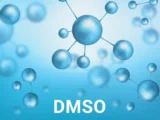Updated on 14. November 2021 from ÁYIO-Q Redaktion
Reading time: approx. 5 minutes
In 2001, a serial ultrasound examination painted a grim picture: one in three Germans has thyroid disease! In most cases, however, there is a benign enlargement of the thyroid gland called goiter or goitre.1
Almost one in 10 women and one in 30 men were affected by an underactive thyroid (hypothyroidism) in 2016 and were undergoing medical treatment as a result. The autoimmune disease Hashimoto’s thyroiditis, known as Hashimoto’s for short, is even more common. More than ten percent of the German population now suffers from this new widespread disease.2,3
An overactive thyroid (hyperthyroidism) is much rarer in comparison. Less than one percent of Germans are diagnosed with hyperthyroidism after a visit to the doctor.4
What is the function of the thyroid gland in our organism?
The thyroid produces the hormones triiodothyronine (T3) and tetraiodothyronine (T4), which are numerous vital processes in the human organism influence. Among other things, they control: 5
- Brain activity, psyche
- Blood pressure and heart activity
- Digestion, intestinal activity
- Energy metabolism
- Carbohydrate, fat and protein metabolism
- Children’s growth
To ensure that the body has the required amounts of T3 and T4 available in every situation, both the production and the release of thyroid hormones are controlled by a regulatory circuit. In this way, the hormone release can be quickly adapted to different needs.
How does the control circuit of the thyroid hormones work?
First, an area of our brain, the hypothalamus, produces the peptide hormone TRH (thyrotropin-releasing hormone) and releases it to the pituitary gland (hypophysis). This gland, the size of a cherry stone, is located below the brain at the level of the root of the nose. As the name thyrotropin-releasing hormone suggests, TRH ensures that the pituitary gland produces the peptide hormone thyrotropin (TSH) and releases it into the blood.
TSH reaches the thyroid gland via the bloodstream, where it binds to the TSH receptor. As a result, iodine uptake into the thyroid gland increases, combined with the production and storage of the hormones triiodothyronine and tetraiodothyronine in so-called follicles. When needed, they can be released immediately into the blood.
The names of the thyroid hormones already indicate this: Each molecule contains three (tri) or four (tetra) iodine atoms. Without a sufficient supply of iodine in the diet, our body does not produce enough thyroid hormones.
The most common thyroid diseases briefly explained
Doctors refer to normal blood levels of T3 and T4 as euthyroidism, too low a concentration as hypothyroidism (underactive thyroid) and too high a value as hyperthyroidism (overactive thyroid). Hyperthyroidism hides two possible diseases: thyroid autonomy and autoimmune disease Graves’ disease.
Hashimoto’s thyroiditis is also an autoimmune disease in which the immune system attacks the thyroid tissue and completely destroys it over time. At the beginning, there is usually a slight hyperthyroidism. Due to the increasing destruction of the thyroid gland, there is a progressive underactivity.
Simply put, the hormones T3 and T4 act like the accelerator pedal of a car: with hyperthyroidism, the accelerator pedal is pressed all the way down and the engine runs in the upper speed range. With hypothyroidism, on the other hand, the driver barely taps the accelerator, so the revs are very low. The symptoms of the two diseases are correspondingly opposite:
Comparison of symptoms between hypothyroidism and hyperthyroidism.
| Underactive thyroid | Overactive thyroid | |
| Weight | Weight gain | Weight loss |
| Blood pressure | Low | High |
| Heart | Slowing of the heartbeat, heart enlargement | Palpitations and racing heart (tachycardia) |
| Body temperature | Decreased, freezes easily | Increased, sweats quickly |
| Temperature Sensitivity | Cold-sensitive | Heat-sensitive |
| Appetite | Lack of appetite (anorexia). | Ravenous appetite |
| Stool | Constipation | Diarrhoea |
| Skin | Cool, dry, thickened, rough | Muggy |
| Hairs | Thin hair, hair loss | Hair loss |
| Performance | Lack of concentration, poor performance | Normal |
| Mood state | Tiredness, rapid exhaustion | Irritability, nervousness, restlessness, mood swings |
| Psychological symptoms. | depression, anxiety | Depression |
Not all of the symptoms mentioned occur with thyroid diseases. The severity of the symptoms can also vary greatly.
Hashimoto’s thyroiditis is inconspicuous and tends to be discovered by chance during a routine examination. The first symptoms can be observed when the performance of the thyroid gland decreases due to progressive hypothyroidism.
How do doctors diagnose thyroid disease?
First, the general practitioner or internist will perform an ultrasound examination of the thyroid gland. If the findings are abnormal, a scintigraphy may be considered to examine the functioning of the thyroid gland and to identify so-called hot and cold nodules.
If a thyroid dysfunction is suspected, a blood sample is taken. As a rule, TSH and all forms of T3 and T4 that occur in the body are determined.6,7
Normal values of thyroid hormones and TSH.
- Total T3: 0.52 – 2.05 µg/l
- free T3 (fT3): 3.4 – 7.2 pmol/l
- Total T4: 43 – 111 ng/ml
- free T4 (fT4): 0.73 – 1.95 ng/dl
- TSH: 0.27 – 4.2 µlU/ml
In order not to confuse our readers with too many numbers, we will pick out the two most important laboratory values: free T3 (fT3) and TSH. Since our body converts T4 into the active hormone T3, free T3 provides the most reliable indication of a disorder. TSH, on the other hand, tells us whether the body needs more thyroid hormones (high TSH value) or whether the amount is sufficient for the tasks at hand (low TSH value).
Thus, an fT3 value below 3.4 combined with a TSH value above 4.2 is an indication of hypothyroidism. Conversely, a TSH value lower than 0.27 and an fT3 above 7.2 indicates hyperthyroidism.
In order to confirm or exclude Graves’ disease as the cause of the hyperfunction, the determination of the TSH receptor antibodies (TSH-R-AK) helps. If Hashimoto’s thyroiditis is suspected, the determination of the TPO antibodies (TPO-AK) provides clarity.
We point out laboratory diagnostics so precisely at this point because some general practitioners only have TSH determined from the blood if thyroid disease is suspected. However, this is not sufficient for an accurate diagnosis.8
Further articles on hypothyroidism, hyperthyroidism and Hashimoto’s thyroiditis
- Hypothyroidism, hyperthyroidism, Hashimoto’s – Causes and treatments.
- Hypothyroidism, hyperthyroidism, Hashimoto’s – Minerals and vitamins support our thyroid.
- Hypothyroidism, hyperthyroidism, Hashimoto’s – Psychological aspects
Sources:
[1] One in three people in Germany has thyroid disease, at https://www.pharmazeutische-zeitung.de, Access date 15.09.2021
[2]Western German women are more likely to suffer from hypothyroidism, at https://www.aerzteblatt.de, Access date 15.09.2021
[3] Hashimoto’s thyroiditis – a new common disease, at https://www.hashimoto-thyreoiditis.de, Access date 15.09.2021
[4] Thyroid diseases: The clock is ticking for millions, at https://www.deutsche-apotheker-zeitung.de, Access date 15.09.2021
[5] Funktion und Aufgabe der Schilddrüse, auf https://www.deutsches-schilddruesenzentrum.de, Access date 15.09.2021
[6] Schilddrüsenwerte, auf https://www.netdoktor.de, Access date 15.09.2021
[7] TSH-Wert, auf https://www.netdoktor.de, Access date 15.09.2021
[8]This is what your thyroid levels mean, at https://www.gesundheit.de, Access date 15.09.2021















